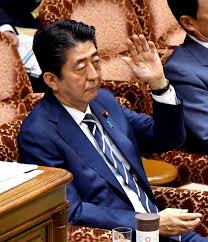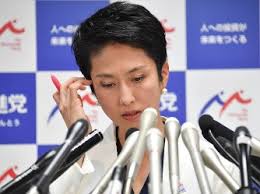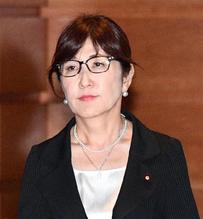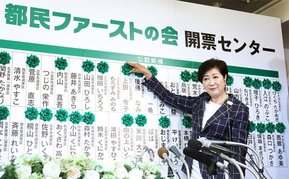 Source: asahi.com
Source: asahi.com PM Abe’s appearance before special sessions of the Lower and Upper House Budget Committees on Monday and Tuesday were meant to provide an opportunity for greater clarification of PM Abe’s knowledge of his office’s involvement with Kake Gakuen, although the result was less than convincing.
For those not in the know (to summarise this article from NHK), Kake Gakuen is the name of an educational institution located in Okayama Prefecture which administers both its home campus along with the Okayama University of Science and the Chiba Institute of Science, along with affiliated high schools and specialist colleges. In January last year, Okayama University of Science made a decision to build a new veterinarian school in the city of Imabari, located in Ehime Prefecture. Imabari had been designated by the federal government as a “special strategic zone” and exempt from many of the usual government regulations applied to the construction of new facilities.
In November last year, a meeting of the National Strategic Zone Committee gave its approval for the construction of a new veterinarian college in Imabari City. When Imabari City announced the development contract for the veterinarian college, only one name was put forward – Kake Gakuen – which was subsequently chosen to build the new facility.
It subsequently emerged that the President of Kake Gakuen, Kake Kōtarō, is a good friend of PM Abe - both of them met as exchange students in the US in their youth. This revelation raised suspicions in the mind of opposition parties and the media that perhaps there was more to the Kake Gakuen decision than meets the eye, and perhaps there was a conflict of interest or at least a bit of quid pro quo going on between Kake Gakuen and the federal government.
PM Abe claims that he knew nothing of the decision to develop the veterinarian college until January 20th this year, long after the decision had been made. He also insists that Kake Kōtarō is no more than a friend and that no favours have been pulled for Kake Gakuen. The problem with this explanation is that the Ministry of Education, Science and Technology (which is in charge of approvals for new educational facilities) was involved in discussions with the PM’s Cabinet Office from September through to October last year concerning the Imabari college. One of the memos from these meetings stated that they (meaning MEXT) had heard that the PM wanted the approval process confirmed “in the shortest time possible”. Another memo from MEXT also stated that the Cabinet Office had requested speeding up the process “at the highest level”, and that Special Minister Yamamoto Kozo had said that he wanted it “done correctly”.
All of those witnesses who appeared in the special session on Monday denied receiving any directions from PM Abe to favour the Kake Gakuen, and PM Abe reiterated his defence that he knew nothing of the matter until it was brought up back in January (although he did admit that his previous explanation of his relations with Kake Gakuen was lacking in detail). This hasn’t placated the opposition parties, however, who point to the evidence that the PM must have known about the existence of the proposed college and that he had substantial contact with Kake Kōtarō before a decision on the college was made.
As long as this issue continues to dog the Abe government the likelihood of any poll recovery is a long way off. If support for the government has plummeted so quickly, some deep-seated reservations about the direction of government policy have been lingering within the population for some time and that the current dilemmas have provided the impetus to bring these concerns to the fore. It’s going to be a rough late summer, no matter how one looks at it.



 RSS Feed
RSS Feed